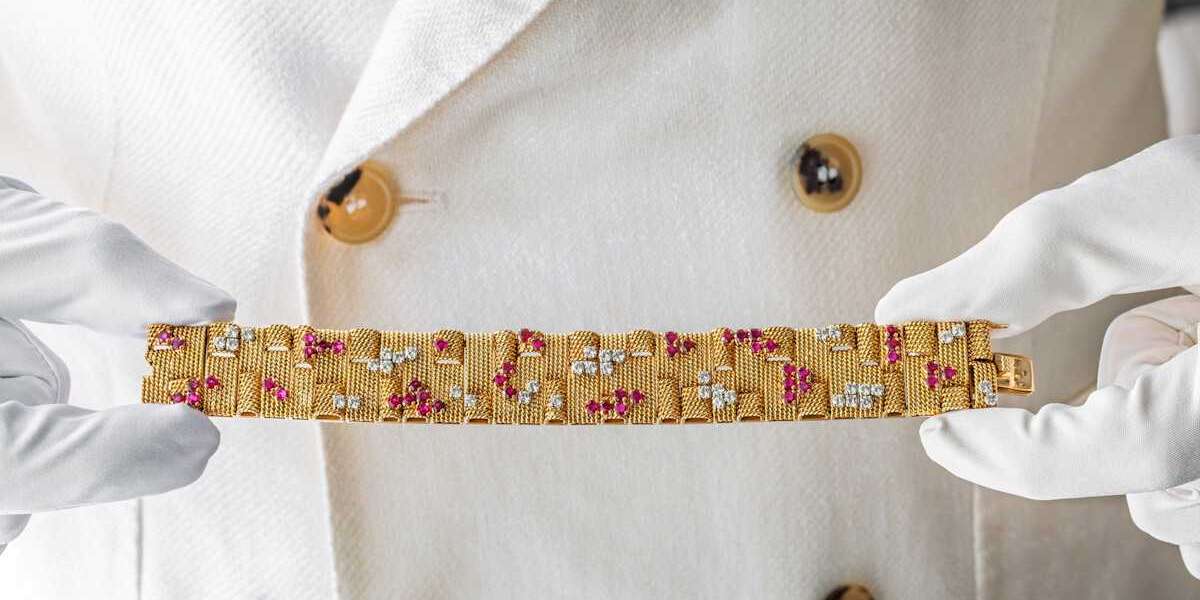Beyond the Brand: Why the Artisan's Signature Adds Both Value and Story
The modern jewelry market increasingly values individuality over mass production, driving collectors toward pieces with clear artistic lineage. Auction houses report that signed pieces from independent artisans often achieve 25-40% higher prices than comparable unsigned works, reflecting growing appreciation for traceable craftsmanship. This shift represents a fundamental change in how collectors assess value, moving beyond brand recognition toward authentic artistic expression.
Understanding the distinction between commercial branding and authentic artisan signatures requires examining how these marks function in the jewelry world and what they reveal about a piece's origin.
Defining Signed Jewelry: Not Just a Logo
Signed jewelry refers to pieces marked with the name, initials, or symbol of the jeweler who created them. Unlike branding, which focuses on marketing, a signature confirms direct authorship or workshop origin.
Key forms of signatures include:
- Engraved initials from individual goldsmiths or studio artisans
- Workshop hallmarks indicating a specific design house or atelier
- Personal logos or monograms used consistently by known jewelers
These markings serve as tools of authentication, especially in cases where formal documentation is missing. In vintage and estate pieces, they often provide the only traceable link to a specific artisan or era.
Historical examples demonstrate this distinction clearly. French Art Nouveau jewelers like René Lalique consistently signed their works, creating a legacy that commands premium prices today. Similarly, mid-century American studio jewelers such as Art Smith or Sam Kramer developed distinctive signature styles that collectors specifically seek.
The authentication value becomes particularly important in estate sales, where family documentation may be incomplete. A clear maker's mark can transform an 'unknown vintage piece' into a documented work by a recognized artisan, dramatically affecting both insurance valuations and resale potential.
The financial implications of artisan signatures extend beyond simple authentication, creating measurable impacts on market performance and collector demand.
Value Drivers Behind Artisan Signatures
Artisan signatures can substantially influence the market value of a jewelry piece. Collectors and appraisers recognize that signed works tend to:
- Command higher auction prices due to verified authorship
- Maintain stable value over time thanks to historical traceability
- Appeal to connoisseurs seeking rare, maker-specific craftsmanship
For example, mid-century studio jewelers in Europe and North America—many of whom operated independently of large brands—have seen renewed interest from collectors. Pieces bearing their signature are often one-of-a-kind and exhibit techniques not found in mass-produced jewelry.
Market analysis reveals specific trends in signed jewelry performance. Pieces by Scandinavian modernist jewelers from the 1960s-1970s, such as Björn Weckström or Pentti Sarpaneva, have appreciated 200-300% over the past decade. American studio jewelry movement pieces show similar patterns, with works by artists like Claire Falkenstein or Margaret De Patta commanding prices that far exceed their original retail cost.
Key market indicators include:
- Auction house premiums of 25-50% for verified artisan signatures
- Insurance valuations that factor maker attribution as primary value driver
- Gallery representation that often focuses on specific artisan lineages rather than generic vintage categories
This performance differential stems from supply limitations—individual artisans produced far fewer pieces than commercial manufacturers, creating natural scarcity that drives appreciation.
Beyond financial considerations, artisan signatures connect contemporary collectors with historical artistic movements and cultural narratives that mass-produced jewelry cannot provide.
Provenance and Narrative Appeal
Beyond monetary value, artisan-signed jewelry carries emotional and historical weight. Each signature tells a story—of the jeweler’s style, period of work, and cultural influence. This enriches both the piece and its presentation in a collection.
Jewelry historians and appraisers often use these marks to link pieces with specific exhibitions, collaborations, or regional movements. For private collectors, knowing who crafted the piece adds a personal dimension often missing from anonymous or brand-focused acquisitions.
Documentation of artisan careers often reveals fascinating connections to broader cultural movements. Art Nouveau jewelers worked during periods of radical artistic change, while 1960s studio jewelers participated in countercultural movements that rejected commercial aesthetics. These connections add layers of meaning that appeal to collectors interested in cultural history alongside artistic beauty.
Research reveals additional value through:
- Exhibition histories that document specific pieces in museum shows
- Artist studio records that provide creation dates and technical details
- Regional artistic movements that created distinctive style categories
Collectors increasingly view signed pieces as windows into specific historical moments, making them conversation pieces that engage viewers beyond their aesthetic appeal.
Successfully acquiring authentic signed pieces requires developing expertise in authentication methods and market evaluation techniques.
What to Look for When Buying Signed Pieces
When evaluating signed jewelry, due diligence is crucial. Buyers should ensure that:
- The signature is original—not added post-production
- The style aligns with known works by the artisan
- Independent appraisals confirm authenticity
It’s also important to distinguish between signatures of individual artisans versus design firms or workshops. While both hold value, individual marks usually signal limited production or bespoke creation.
Authentication challenges vary by period and artisan. Pre-1950 European pieces may feature subtle workshop marks that require magnification to identify, while American studio jewelry from the 1960s-1980s often displays bold signatures that serve as design elements. Understanding these variations prevents costly attribution errors.
Professional evaluation should include:
- Microscopic examination of signature application methods
- Style analysis comparing known works by the claimed artisan
- Material testing to confirm period-appropriate alloys and techniques
- Provenance research through gallery records or estate documentation
Reputable dealers provide detailed authentication reports that document their attribution reasoning, offering buyers confidence in their acquisitions.
Conclusion
The growing appreciation for artisan-signed jewelry reflects broader market trends toward authenticity, craftsmanship, and historical significance. These pieces offer collectors opportunities to own documented works by skilled artisans while participating in preservation of jewelry-making traditions that commercial production cannot replicate.
Smart collectors recognize that signed pieces provide both aesthetic enjoyment and investment potential, combining artistic merit with market performance that often exceeds contemporary luxury purchases. The key lies in developing expertise to identify authentic signatures and understanding the cultural contexts that drive their appreciation.
Discover Authenticated Artisan Collections
For collectors seeking professionally authenticated signed pieces with documented provenance, expert guidance ensures confident acquisitions. Understanding which artisan signatures carry market significance requires specialized knowledge of historical periods, regional movements, and authentication techniques that distinguish genuine marks from later additions.
Grygorian Gallery maintains extensive collections of signed vintage jewelry, with each piece undergoing rigorous authentication and provenance research. From European Art Nouveau masters to American studio movement pioneers, these carefully curated selections offer collectors access to documented works that combine artistic significance with proven market performance.
Main Collection
Types Of Signed Jewelry
- https://grygorian.com/signed-jewelery/type-of-jewelry-necklace/
- https://grygorian.com/signed-jewelery/type-of-jewelry-bracelet/
- https://grygorian.com/signed-jewelery/type-of-jewelry-earrings/
- https://grygorian.com/signed-jewelery/type-of-jewelry-brooch/
- https://grygorian.com/signed-jewelery/type-of-jewelry-ring/
- https://grygorian.com/signed-jewelery/type-of-jewelry-cufflinks/
Signed Jewelry By Color
- https://grygorian.com/signed-jewelery/color-fancy-light-yellow/
- https://grygorian.com/signed-jewelery/color-coral/
- https://grygorian.com/signed-jewelery/color-grey/
- https://grygorian.com/signed-jewelery/color-black/
- https://grygorian.com/signed-jewelery/color-brown/
- https://grygorian.com/signed-jewelery/color-blue/
- https://grygorian.com/signed-jewelery/color-bright-green/
- https://grygorian.com/signed-jewelery/color-green/
- https://grygorian.com/signed-jewelery/color-orange/
- https://grygorian.com/signed-jewelery/color-yellow/
- https://grygorian.com/signed-jewelery/color-silver/
- https://grygorian.com/signed-jewelery/color-white/
- https://grygorian.com/signed-jewelery/color-pink/
- https://grygorian.com/signed-jewelery/color-red/
Signed Jewelry By Material
- https://grygorian.com/signed-jewelery/material-black-leather/
- https://grygorian.com/signed-jewelery/material-bronze/
- https://grygorian.com/signed-jewelery/material-18k-grey-gold-750/
- https://grygorian.com/signed-jewelery/material-silk/
- https://grygorian.com/signed-jewelery/material-sterling-silver/
- https://grygorian.com/signed-jewelery/material-black-onyx/
- https://grygorian.com/signed-jewelery/material-black-enamel/
- https://grygorian.com/signed-jewelery/material-18k-gold/
- https://grygorian.com/signed-jewelery/material-18k-yellow-gold/
- https://grygorian.com/signed-jewelery/material-18k-rose-gold/
- https://grygorian.com/signed-jewelery/material-18k-white-gold/
- https://grygorian.com/signed-jewelery/material-22k-yellow-gold/
- https://grygorian.com/signed-jewelery/material-chalcedony/
- https://grygorian.com/signed-jewelery/material-coral/
- https://grygorian.com/signed-jewelery/material-enamel/
- https://grygorian.com/signed-jewelery/material-mother-of-pearl/
- https://grygorian.com/signed-jewelery/material-onyx/
- https://grygorian.com/signed-jewelery/material-platinum/
- https://grygorian.com/signed-jewelery/material-silver/
- https://grygorian.com/signed-jewelery/material-stainless-steel/








